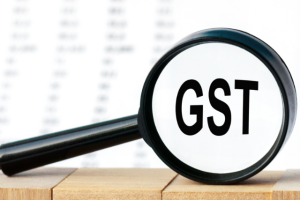Maintaining accurate financial records and implementing effective bookkeeping processes is...
Read More
Understanding financial reports is a fundamental skill for business owners for effective business management and financial success. It empowers business owners with the necessary financial insights to make informed decisions, evaluate performance, forecast and fulfill their legal obligations.
The three most important business financial reports I will detail in this article are: Profit & Loss report, Balance Sheet and Cash Flow statement. These reports provide business owners, with a comprehensive understanding of the business’s financial performance and position and play a critical role in decision making.
Why business owners need to understand financial reports
Performance evaluation
Financial reports help business owners understand the business financial position and assess the overall performance and profitability of their business.
By analysing key financial information, business owners can identify areas of improvement, address inefficiencies, and take necessary actions to increase profitability.
Facilitate business decision based on accurate data
Financial reports provide information about the financial health and performance of a business. By analysing these reports, business owners can make informed decisions about resource allocation, pricing strategies, and cost reduction measures. Understanding financial reports allows owners to assess the potential risks and benefits associated with different options and make sound business choices.
Financial planning and forecasting
Financial reports provide historical data that can be used as a basis for financial planning and forecasting. Business owners can analyse revenue trends and cost patterns to develop realistic budgets, set financial goals, and project future performance.
Compliance and tax obligations
Financial reports play a crucial role in fulfilling tax obligations. Business owners need to understand reports to comply with tax regulations, prepare accurate BAS and tax return and make sure they have the funds to pay for BAS and tax.
Profit & Loss Report
P&L report summarises the business’s revenues, costs, and expenses over a specific period
A profit and loss report, also known as an income statement or P&L statement, is a financial statement that summarises the business’s revenues, costs, and expenses over a specific period. The purpose of the report is to show whether the business has made a profit or a loss during that period.
Here are the basic elements of a profit and loss report:
Revenue: The money that the business has earned during the selected period. It includes sales revenue, fees, interest income, and any other money the business has received.
Cost of goods sold (COGS): The cost of producing or purchasing the products or services that the business sells. It includes the cost of raw materials, labour, and any other expenses directly related to producing or purchasing the products or services.
Gross profit/loss : The difference between revenue and cost of goods sold. It represents the amount of money the business has left over after paying for the cost of producing or purchasing its products or services.
Operating expenses: The expenses the business incurs while running its business, such as office expenses, salaries, advertising, accounting, and insurance.
Net profit or loss: The business ‘s profit or loss after deducting operating expenses from gross profit. If the net profit is positive, the company has made a profit. If the net profit is negative, the company has made a loss.
It’s important to note that a profit and loss report only shows a snapshot of the business’s financial position over a specific period of time. It doesn’t take into account things like long-term investments or liabilities.
Balance Sheet
Balance sheet formula is:
Assets = Liabilities + Equity
A balance sheet provides the business’s financial position at a selected point in time. The reports show the business’ assets, liabilities and equity. It is called “balance” sheet because it shows what the business owns (assets), what it owes (liabilities) and the difference is the equity.
The balance sheet formula is: Assets = Liabilities + Equity
The balance sheet is divided into two sections:
1. The left-hand side shows the business’s assets.
2. The right-hand side shows the business’s liabilities and equity.
This section includes a list of what the business owes to others and what’s left over for the owners. Assets: What the business owns or has a right to, such as cash, inventory, buildings, or equipment. Liabilities: Any debts or obligations the company owes to others, such as loans, accounts payable, or taxes owed.
Equity: Represents the owners’/directors’ claim on the businesses’ assets after reducing liability.
Cash Flow Statement
Cash flow statement provides information about the business cash movements
Cash flow statement provides information about the business cash movements. Think of a cash flow statement as a record of the money coming into and going out of the business and can help business owners make informed business decisions.
A cash flow statements tracks movement of monies into and out of the business from three types of business activities:
Operating activities: Primary business activities, such as sales and expenses.
Investing activities: Purchase or sale of property, plant, and equipment or other investments. Financing activities: Borrowing money, issuing stock or owner’s contributions.
A positive net cash flow means that the business generated more cash than it spent during the period, while a negative net cash flow means that a business spent more cash than it generated. In summary, a cash flow statement is a financial statement that shows the amount of cash that the business generates and spends during a specific period of time. It provides valuable information about a business’s liquidity and ability to meet its financial obligations.
In summary
These reports provide business owners, with a comprehensive understanding of the business’s financial performance and position and play a critical role in decision making.
As the business owner you would want to understand and analyse these reports.
Related articles
GST basics for Australian businesses
This article aims to provide you with a fundamental understanding...
Read More
